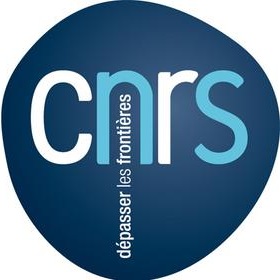Keynote speakers
Yaakov Bar-Shalom: The Information Limit in Clutter: CRLB in the Presence of False Measurements and the ML-PDA Estimator
Abstract: download
Slides: download the slides of the talk.
Michael Jordan: Bayesian Nonparametrics for Speech and Signal Processing
Abstract: Bayesian nonparametric statistics involve replacing the "prior distributions" of classical Bayesian analysis with "prior stochastic processes." Of particular value are the class of "combinatorial stochastic processes," which make it possible to express uncertainty (and perform inference) over structural aspects of models, including cardinalities, couplings and segmentations. This has allowed upgrades to many classical probabilistic models, including hidden Markov models, mixture models and tree-based models, and it has allowed the design of entirely new models. I overview some of the basics of combinatorial stochastic processes and present applications to several problems in and around speech and language technology, including speaker diarization and multiple time series segmentation.
Slides: download the slides of the talk.
Vikram Krishnamurthy: Social Learning in Adaptive Sensor Networks
Abstract: This talk deals with decentralized information processing and Bayesian social learning in sensor networks using game theoretic methods. The aim is to show how simple local behavior can result in sophisticated global behavior thereby facilitating decentralized awareness in a sensor network. The talk comprises of three parts. In the first part of the talk, we illustrate how the theory of global games gives a powerful method for designing decentralized data-aware sensor activation algorithms in dense sensor networks. We show that the Nash equilibrium of the sensor network has a simple threshold structure, yet the network exhibits complex global behavior. The second part of the talk considers Bayesian social learning where sensors learn from local decisions of previous sensors. We examine how such local decisions affects global decision making. Finally, we describe how decentralized adaptive filtering algorithms deployed at each sensor node can guide the global network behavior to a correlated equilibrium.
Slides: download the slides of the talk.
Stephane Mallat: High Dimensional Signal Classification with Invariant Representations
Abstract: Classification requires finding appropriate metrics to compare signals. Audio and visual perceptual metrics remain a mystery. They are invariant to particular groups of transformations such as translations and scaling and are continuous to deformations relatively to these group actions. Representations that are both invariant to a group action and Lipschitz continuous to deformations can linearize classification problems, but finding them is a challenge. We introduce a class of non-linear scattering operators which satisfy these properties. They are computed by cascading modulus operators and wavelets transforms on the group. For translations, it provides new representations of stationary processes which discriminate textures having same power spectrum. A linear PCA classification applied to scattering representations is shown to provide state of the art classification results on data bases of structured patterns and for textures. Relations with physiological auditory and visual models will be discussed.
Slides: download the slides of the talk.
Pramod Varshney: A Copula based Framework for Distributed Inference
Abstract: There has been a lot of recent research effort directed towards distributed inference especially in the context of sensor networks. This requires fusion of information acquired from networked sensors. Past work has largely focused on fusion of information from homogeneous sensors and is typically based on the assumption of statistical independence between sensor observations. In most practical situations, however, these are not realistic assumptions. This talk will present a brief introduction to the theory of copulas and discuss how this theory can be employed to process and fuse dependent information, even when the information sources or sensors are of disparate modalities. Several illustrative examples will be presented. These will include 1) detecting the presence of a human using footstep signals from seismic and acoustic sensors, 2) fusion of biometric signatures for human identification, 3) location estimation of a random source, and 4) Quantifying EEG Synchrony for detection of Alzheimer disease. No examples from finance will be given!
Slides: download the slides of the talk.



